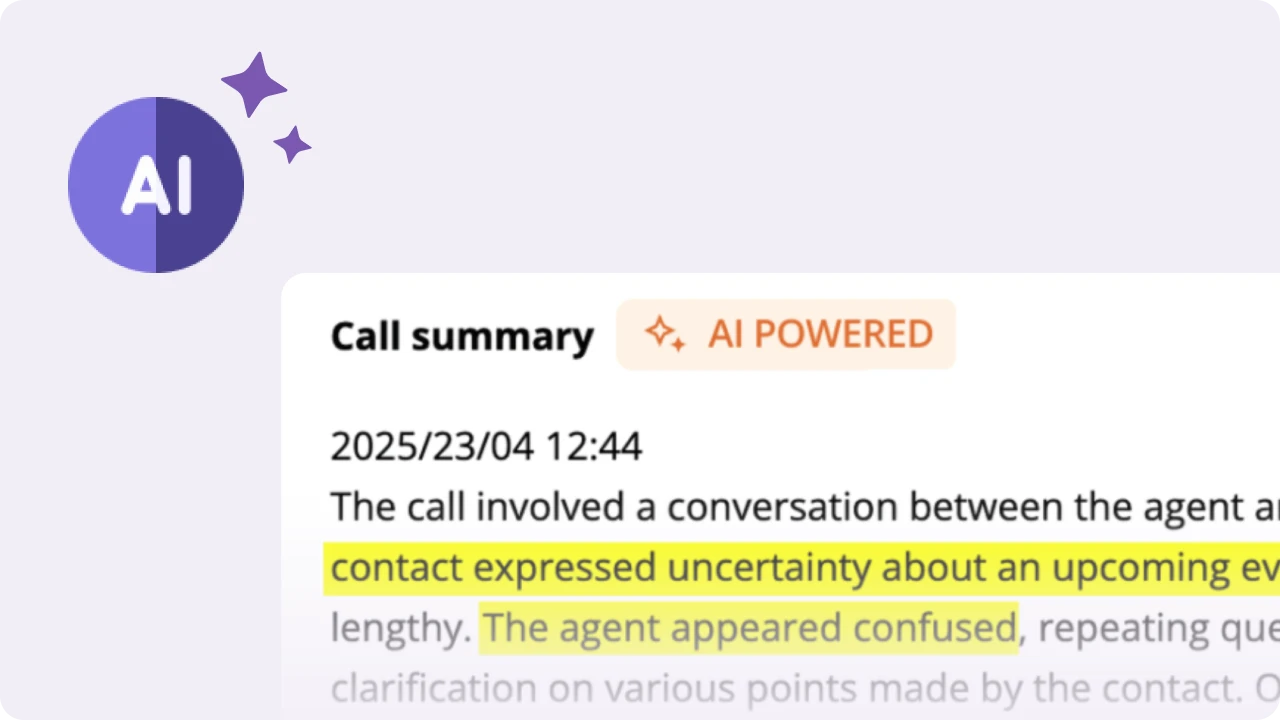Table of Contents
It’s early in the election cycle. The phones are ringing nonstop, and a nonprofit organization is hustling to connect with voters nationwide. With thousands of calls daily, their team is spread across different time zones, working around the clock.
There are dozens of call scripts, different regions to cover, and millions of voters to reach.
Despite the sheer volume, the team is determined to make it work. They’ve built a system – a structured one. They hold caller debriefs and live listen-ins where over 10 staff members listen to calls.
They use checkout forms to track caller feedback, identifying what worked, what didn’t, and how the callers are feeling about the day. This system of feedback loops is strong, but the volume of calls makes it hard to stay on top of everything.
While their processes are solid, there is always a nagging issue: how can we efficiently handle such massive data without burning out our team?
Manual efforts alone just didn’t cut it anymore
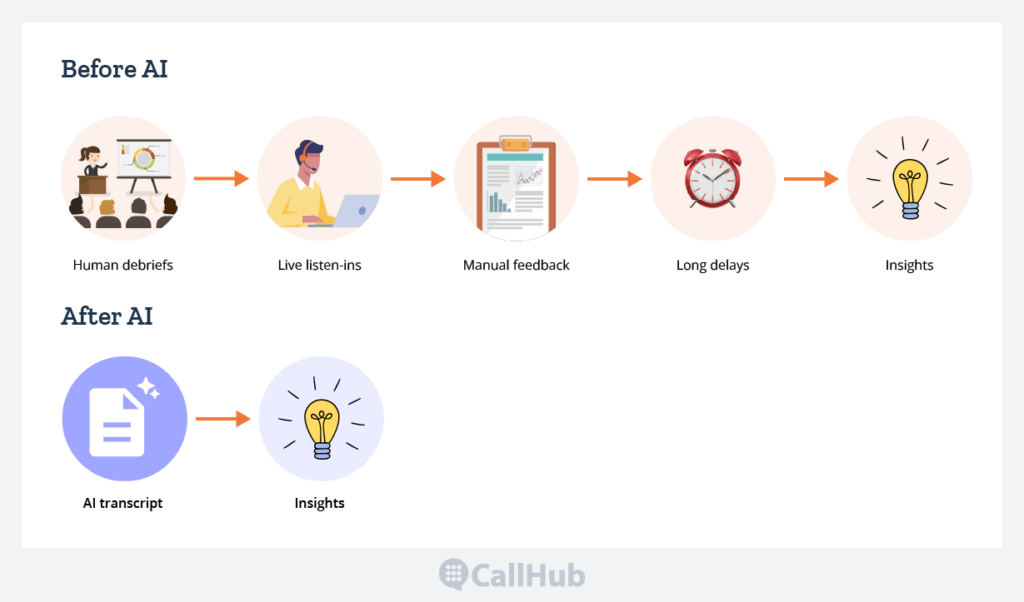
The team was well-coordinated, but they were starting to feel the pressure. Even with all the systems in place, they were only able to scratch the surface of understanding what was really happening on the calls.
The volume was overwhelming, and the time it took to track trends, quality issues, or even to dig into the feedback was growing increasingly unmanageable. Their only real option was spot-checking calls live or sifting through recordings. Neither was sustainable.
- Tracking agent performance took days to notice if someone was struggling.
- Understanding voter sentiment relied on analyzing survey responses, which lacked nuance.
- Adjusting messaging on the fly? Forget it – by the time they realized an issue, they had already moved on to another batch of calls.
The expectation was to make calls searchable, reviewable, and easier to digest, without having to sift through hours of audio files. With a lean leadership team and thousands of calls happening daily, managing everything was getting harder day by day.
They needed something smarter.
That’s when they decided to give CallHub’s AI-powered transcripts a shot.
AI listened, so they didn’t have to
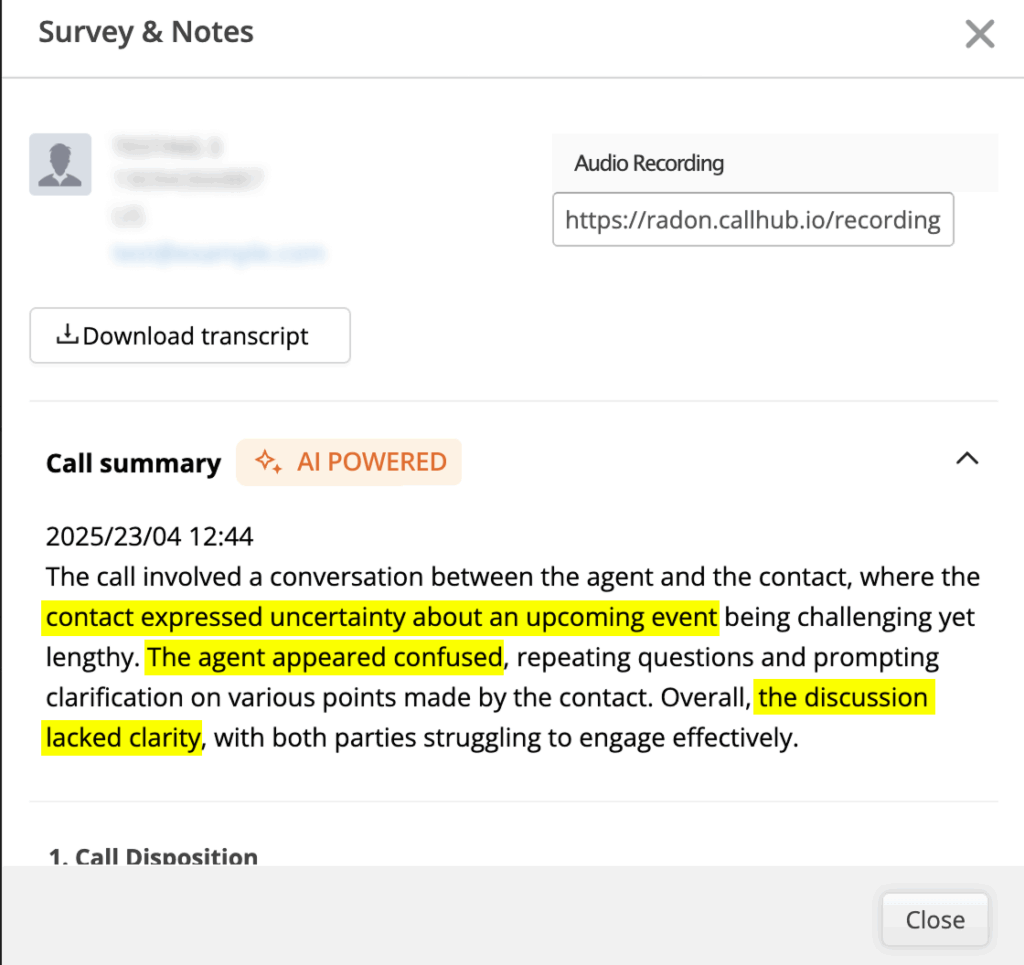
They needed AI to do two things: make calls searchable and pull out meaningful insights – fast.
So, they integrated CallHub’s AI-generated transcripts and sentiment analysis into their workflow. Now, every call was automatically transcribed, which meant no more manual reviews, and they could search for specific voter responses.
Instead of listening to hundreds of calls, they could find exactly what they were looking for – whether it was a certain objection or a specific sentiment that had come up in the conversation.
What used to take weeks of manual review was now possible instantly.
It also meant that every call could be a learning opportunity.
Every ‘what if’ had an answer
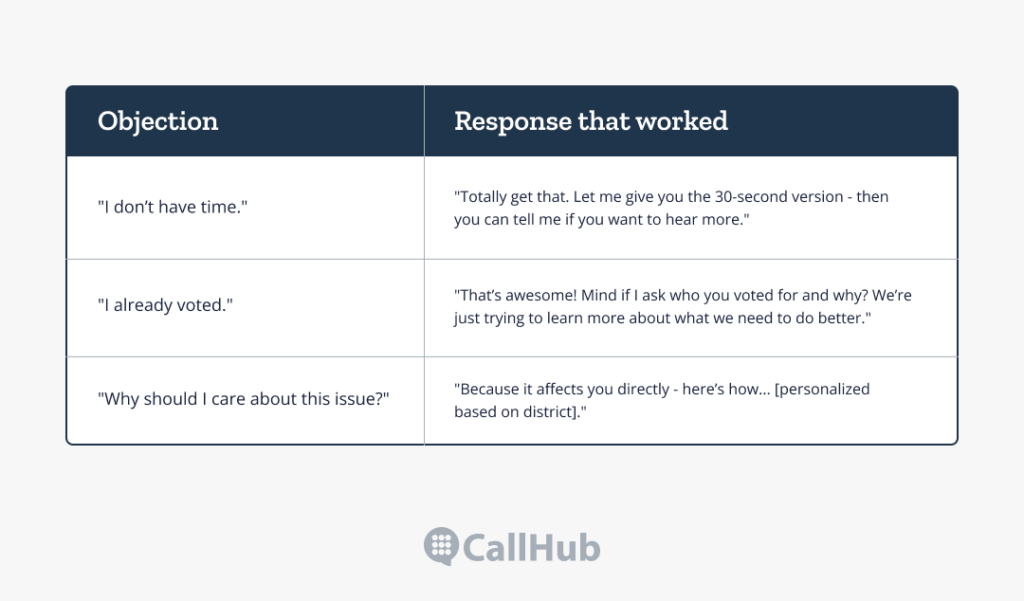
Before they had the AI-powered transcripts, they’d provide new callers with hypothetical scenarios, teaching them what they might hear and how to respond.
It was all theoretical.
But now, with CallHub’s transcripts, the team could pull up real examples of conversations. They didn’t just tell the new hires what might happen – they could show them exactly what happened and how a particular response worked (or didn’t).
If a new caller stumbled on a tricky objection, the training team could have a real-time, data-backed conversation about how to handle it next time.
Training became much more grounded, and the impact was immediate. Callers learned faster and more effectively, and the messages they delivered were much more consistent across the board.
Instead of training based on theory, the team could now train based on actual conversations, showing new agents real examples of both great and less-than-perfect calls.
Fixed problems before they snowballed
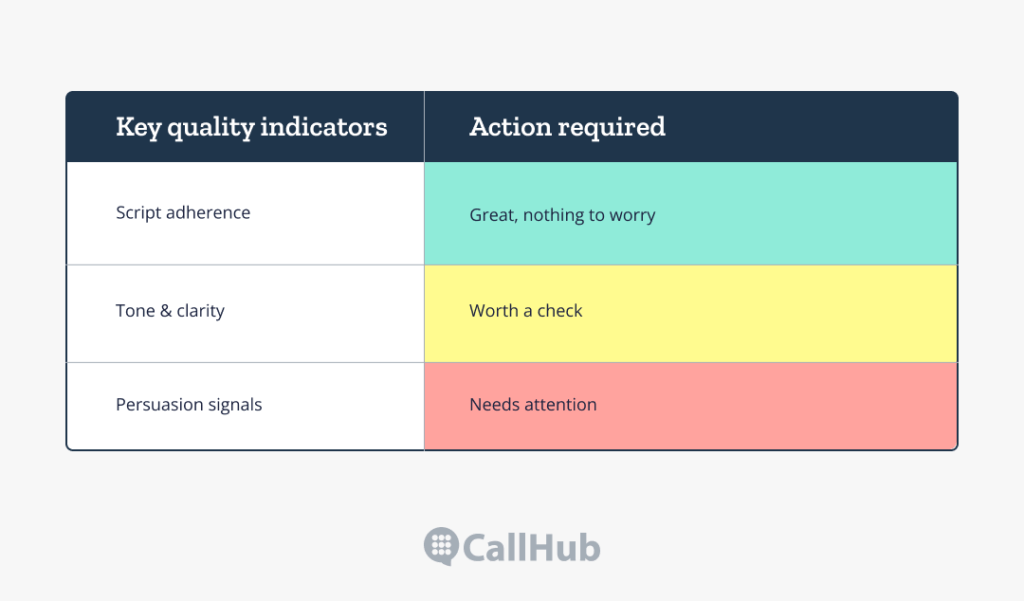
With thousands of calls per day, quality control had been a major challenge. It’s not that they weren’t paying attention, but there was no efficient way to spot mistakes or track emerging issues. They’d review a few calls at random and hope it was representative.
Before AI, it might have taken days to notice an agent struggling. By then, they could’ve had hundreds of ineffective conversations and thus, lost opportunities.
AI changed that by:
- Flagging unusual or low-quality transcripts.
- Helping team leads spot underperforming callers within hours instead of days.
This meant that issues could be addressed immediately, rather than after they had spread across thousands of calls.
Instead of waiting until the end of the campaign to understand voter concerns, leadership got nightly summaries. If Arizona voters suddenly started mentioning immigration more, they knew about it that same day, and could adjust their messaging accordingly.
The team could spot trends faster. A region that was struggling with a certain script could be identified immediately, and the team could adjust their approach without waiting for a manual review process.
If a particular agent was getting tripped up, the team could train them on specific calls. If an issue was broader, they could adjust the script or provide new guidance. And they didn’t have to spend endless hours listening to calls – they could search, find, and act in minutes.
AI was the assistant, not the replacement
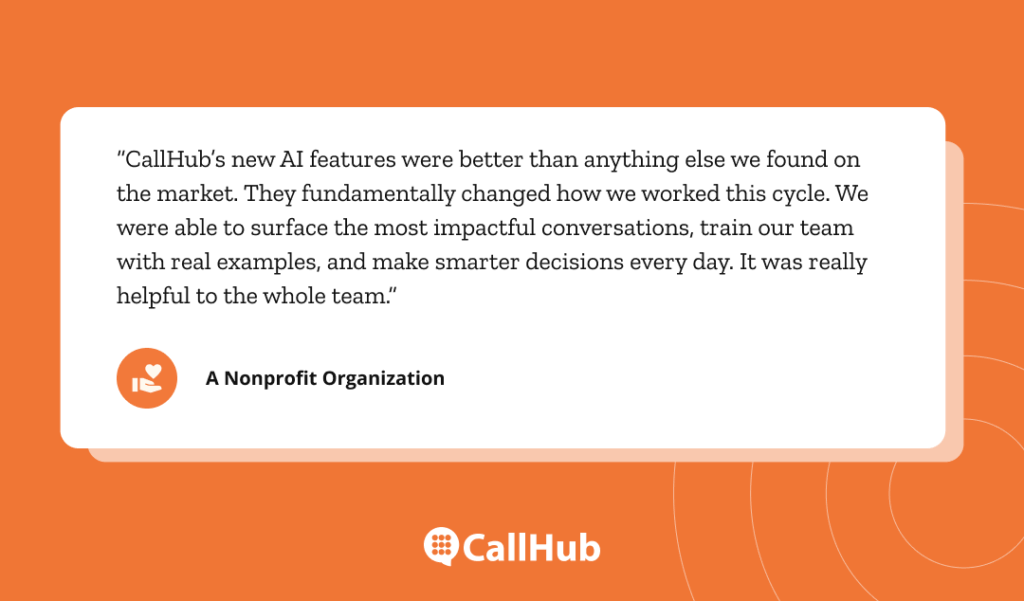
The team’s existing systems were critical. But with CallHub’s AI, those systems were smarter. They didn’t replace the human feedback loops; they made them more actionable.
Now, the team wasn’t spending all their time listening to hours of audio or manually cross-checking feedback. They could work smarter by using the data to target exactly where help was needed most.
This freed up their staff to focus on the work that mattered – improving strategies, refining messaging, and keeping up with the fast-paced nature of the election cycle.
So did it work? Hell yeah
What did all this lead to?
✅ Call reviews went from days to hours, allowing the team to act on issues and insights much faster.
✅ The strategic insight they gained through sentiment analysis gave them a more data-driven approach to campaigning.
✅ Training became more effective, thanks to real examples and real-time training.
✅ Quality control went from reactive to proactive, as the team could identify and fix issues before they spread.
But the biggest win of all?
They could scale their intelligence without scaling their workload, and productivity skyrocketed. They could focus on what really mattered – delivering a message that resonated with their contacts – while AI helped them track, analyze, and improve their efforts.
As campaigns look ahead to future election cycles, AI will only get better. The real question is: how do we combine technology with better organizing, training, and strategies to create an operation that isn’t just efficient, but unstoppable?
Want to use AI and make your team smarter overnight? Hit us up on [email protected].


